- Where did you start as an artist?
The structured 40 hours job got me questioning many things in life, and slowly I felt an urge growing in me. At that time, I was urged to create and make decisions based solely on my feelings and ideas. So I treated myself to a new language. Where there was no longer a need to use wording as an expression, abstract expression was used rather than society’s association on how life should be. Replaced by nothing but colors and shapes, some days, textures play a more prominent role than others. I did not feel the need to belong to an object-orientated world or a language-oriented culture. No society is driven by associations. The only connotations are the ones I’m acknowledging. That gave and still gives satisfaction in so many ways.
I practised my mind to move in many different directions and states of mind, unlike one’s body. Up until now, regardless of the physical place where my work has been presented so far, it always creates a dialogue and a sense of recognition and awareness within the viewer. This type of dialogue is something I wanted to establish with my work. My motivation is to express myself and discover what that means. Create recognition and a sense of belonging for people. I think art is an important language of expression. It reflects emotion, concept and ideology. Create recognition and a sense of belonging for people. It can make you feel and wonder. It makes me aware and gives me the freedom to be myself.
Back in 2016, I was asked to contribute to a 10 days sustainability pop-up store in London hosted by the mill I was working for at that time. This was my first time using the pigment indigo as a painting medium. I worked on a 10 meters canvas out on the street in London, which I filled using natural indigo paint, hand embroidered on top of the canvas with natural indigo dyed yarns. Currently, this is still the core of my work. I live and work in my Atelier in Amsterdam.
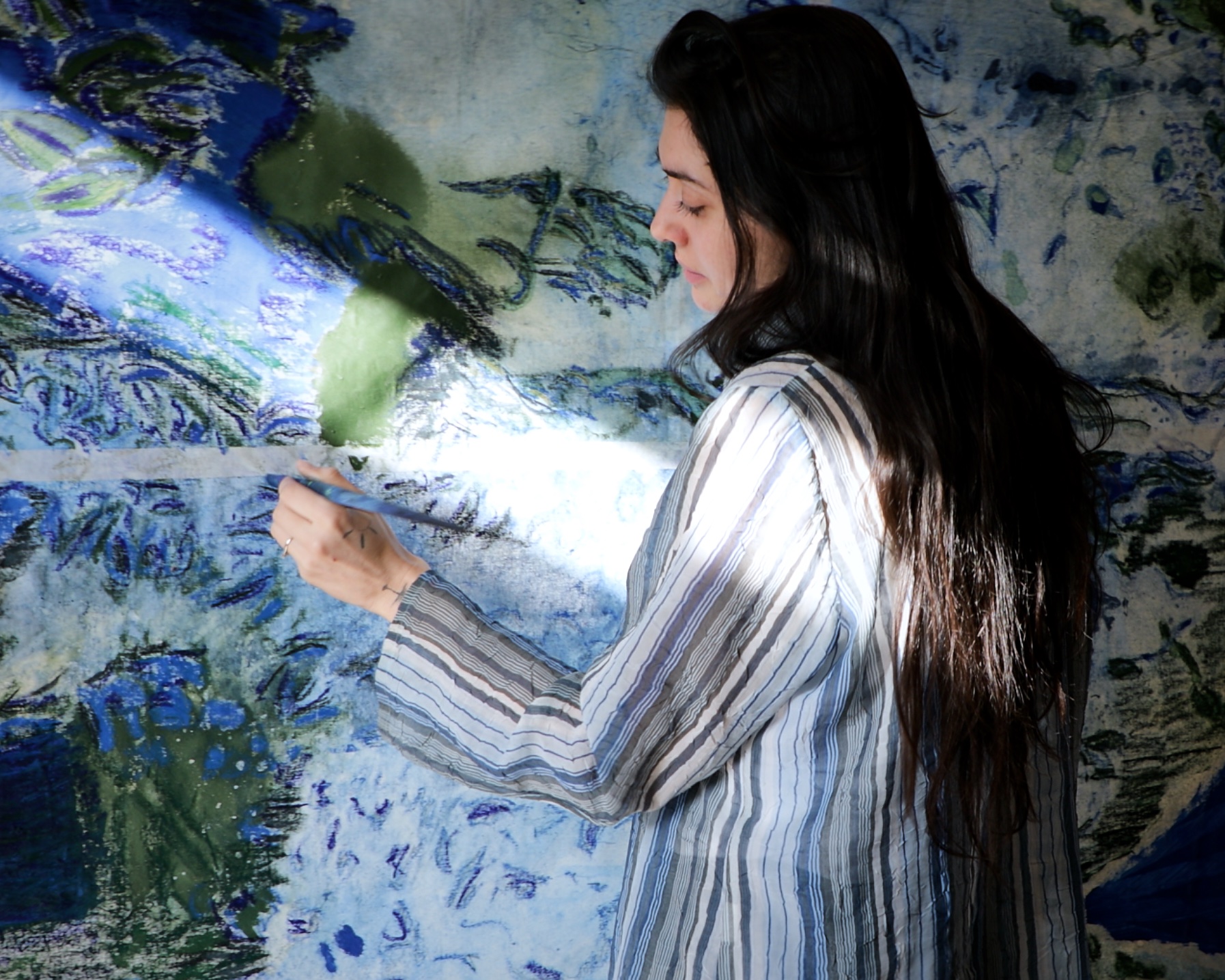
- Can you share with us your inspiration, the meaning behind using geometrics and patterns in your work, and your creative process?
I like to work large and with unconventional tools such as brooms and large wooden slats. For me, this works best for capturing large movements. My canvases usually start at about 6 meters and go up to 10 meters. I call this the mother cloth, and I cut this into a number of smaller works. This has always been my method. The mother cloth captures the energy and movement, which is what the action is based on, such as the attributes mentioned above. I continue experimenting with the interplay of nature and its elements, such as water and sun and develop a unique abstract style with psychological layers that are deeply personal and universal at the same time.
I take inspiration from people and their roles in society. The translation is quite abstract, and it is about the dynamics between light and dark. The appearance and disappearance of shapes and colors, just as people and situations. Without a preconceived plan, I tend to create canvases full of movement and feeling. Because of its fast-drying period, I mainly use acrylic, allowing me to paint in a preferred spontaneous manner. Through this intuitive process, I set out to create an intimate dialogue with my subjects.
Once the works have a base, I move on to the next layer, then I start using brushes, and lately, a lot of oil chalk has been used. This requires more planning and patience. There is less room for spontaneity, and geometric composition is involved, but at all times is abstract. Because my work arises from a mother cloth, there is no question of format or framing. How many works eventually come out of a mother cloth and whether this will be landscape or portrait always surprises me.
I have a natural curiosity about patterns and geometric rules. In my work, I explore the boundaries of intention and the opposing forces of logic and intuition by applying sacred geometry and an organic, instinctual-driven painting method—two contrary worlds.
It’s about the appearance and disappearance of these two matters and the playfulness between those two. It’s intuitive, abstract, and spontaneous, as if nature did its way. In every work, it is a disappearing and appearance of organic forms that together form themes. Social unrest on canvases where-countless energetic bursts of blue alternating in all sorts of hues. In contrast to the lightness, elusiveness, or tenderness of existence on canvases with light tones and paint that seems to be embedded in the canvas nest like a water stain. Next to a come-and-go from shape and color, you will also discover sacred geometric shapes in my work. Everything in nature leads back to these shapes. An important recurring aspect in my work is the blueprint of humankind, symbolized by the ‘Flower of Life’. By definition, the Flower of Life symbolizes creation and reminds us of the unity of everything: we are all built from the same blueprint. A visual connection expresses the life that runs through all living things is a token of spirituality. Some of my older work you refer to has been created with the same ideology, just a different painter’s hand at the time, and my work developed over the years.
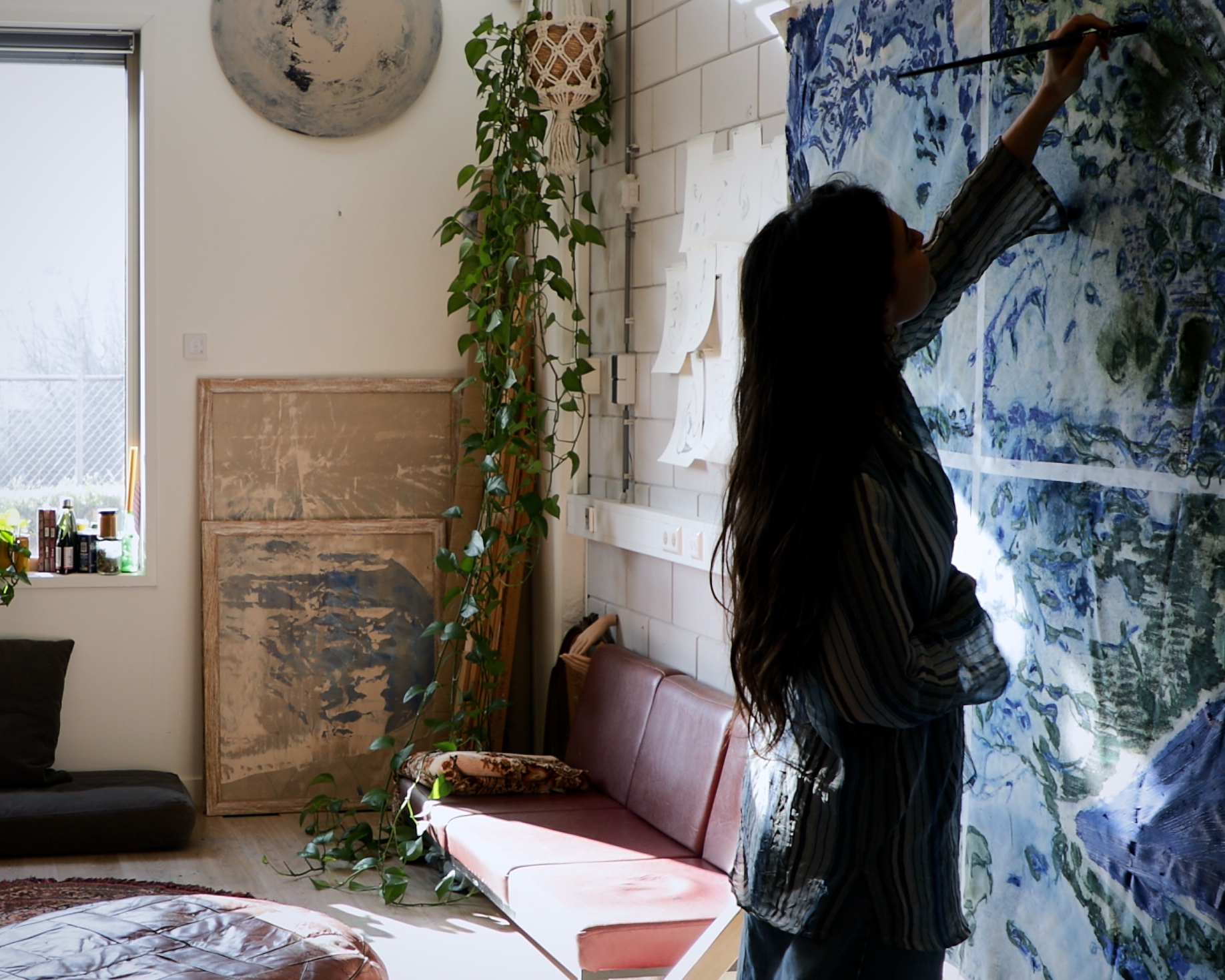
- Why did you choose the colour blue as the primary hue of your art pieces?
Coming from a fashion background, I’ve previously worked with indigo a lot. The diversity of the natural pigment had me in awe at an early stage. I used my parents’ bath to experiment with dying baths. The interaction of the indigo on different resources had and still has me intrigued. I would hand weave meters of cloth from recycled material. I would tear and use everything I could find to weave cloth with. Cotton reacted differently from linen and so on. As an artist, I like to develop my handwriting, and I’m very curious about different disciplines.
My curiosity led me to use indigo as a painting medium rather than a textile. The medium came first; the philosophy, something that is embedded in me as a person, made sense, and this is how it started. The philosophy I refer to above is ‘An important recurring aspect in my work is the blueprint of humankind, symbolized by the ‘Flower of Life’. By definition, the Flower of Life symbolizes creation and reminds us of the unity of everything: we are all built from the same blueprint. A visual connection expressing the life that runs through all living things. A token of spirituality.
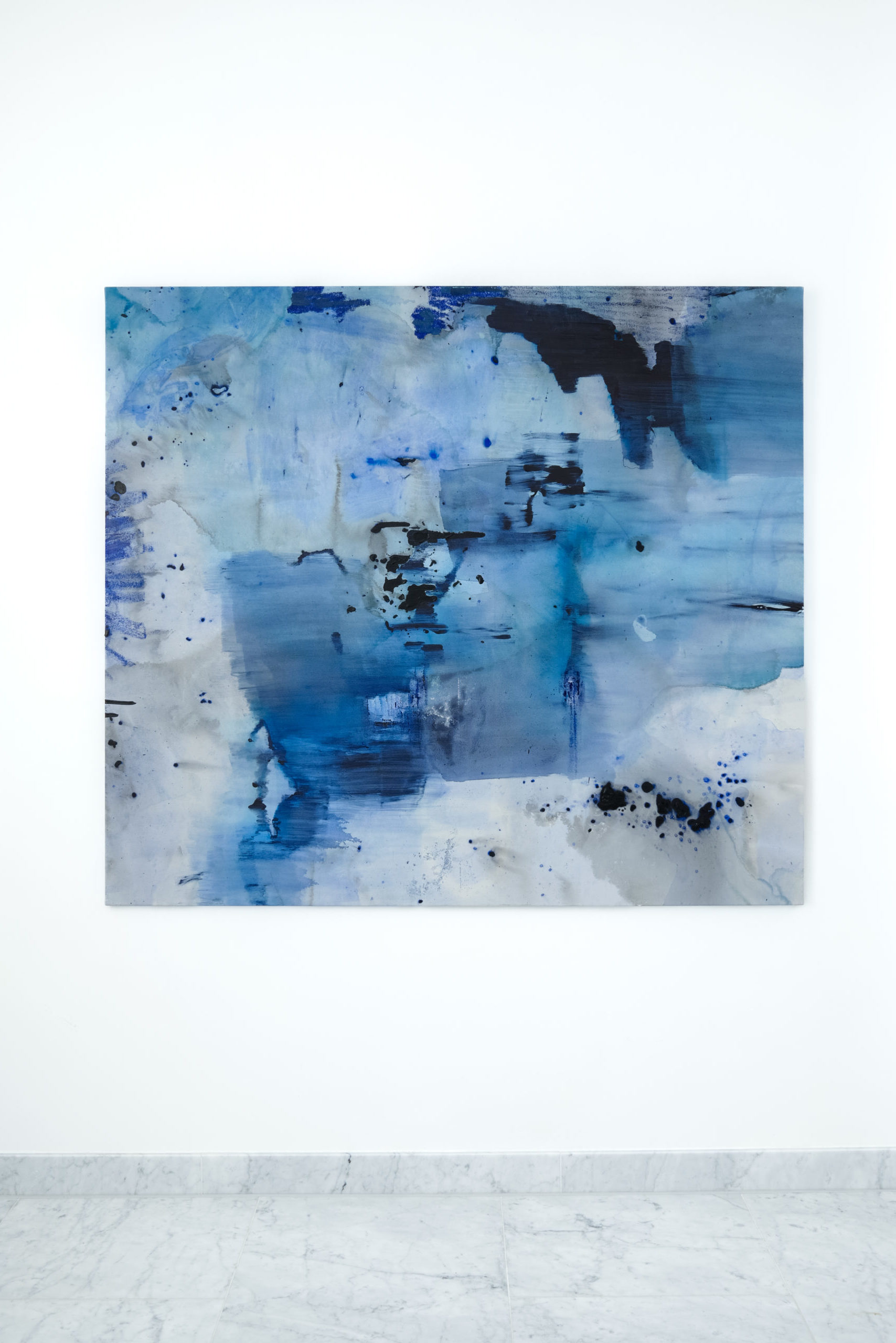
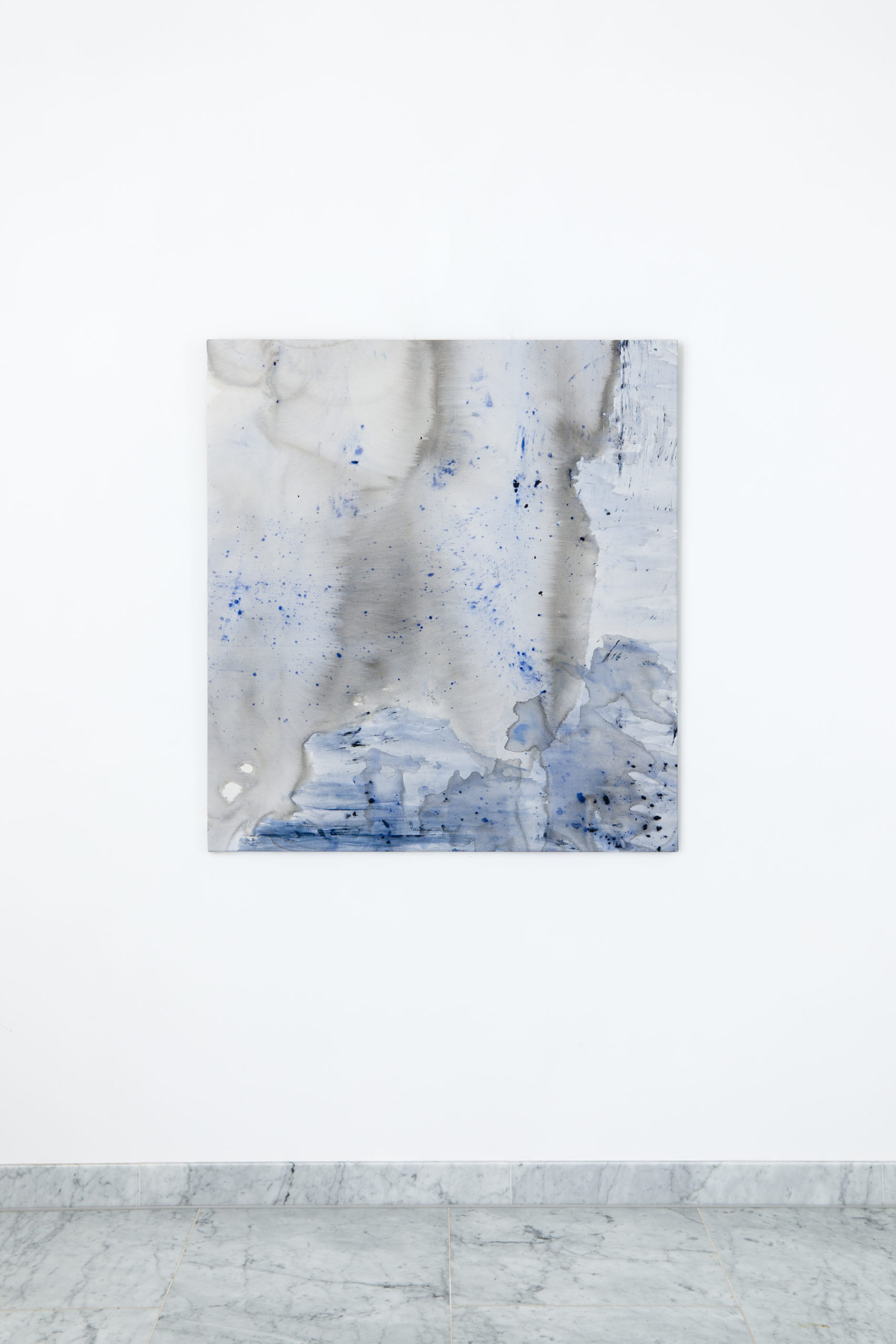
- What other mediums or artistic styles are you looking forward to experimenting with in the future?
I included ceramics and glasswork in my solo show last September at Hama gallery. With these, I tried to adopt the same abstract quality as seen in my paintings.
As an artist, I like to evolve and work in different disciplines. I’m naturally driven and curious to see my own handwriting in new materials, 3d shapes etc, as I enjoy the interplay of water and sun, the translucent and movement in it. The Glass work was an obvious choice. It was important for me to have shape analysis as a starting point. Hand-blown glass is endless in its movement and shape degrees possibilities, and this really excites me. I titled the piece See the Rise, Feel the Sun, as a reference to the infinity of the cycle of the sun. An ode to nature, combined expertise and favorite material, hand-blown glass.
On the sculptural glass, echoing many of our circular landscapes, sit sheets of colored glass run through each other, through a subtle play of light and textures, magnifying the glass and the surrounding surfaces. Colorful transparencies and subtle overlays unfold before our eyes.
See the rise, feel the sun evoke a succession of waves, sunrises and sunsets, moon reflections on these abstract landscapes where the glass turns to glass. Eventually, glass binds to the landscapes.
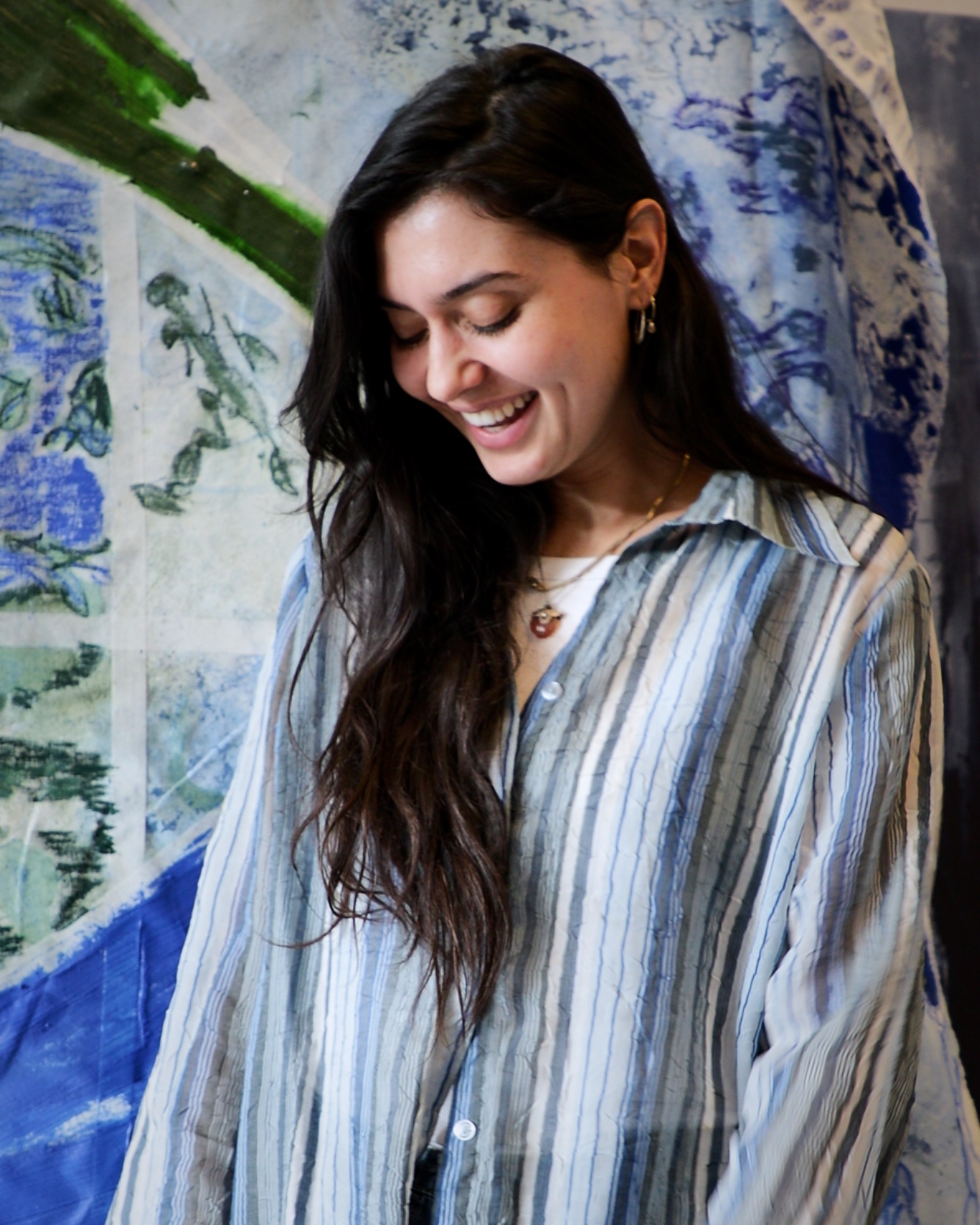
- How do photography and other art forms work together and influence each other?
Photography is an art form on its own. I believe in the hybrid of different disciplines. Great things come together when people come together. Community is everything. Where photography captures reality, a painting captures my eye’s reality. Something completely different. Painting, for me, is an exploration of spontaneity and visual ambiguity. All art forms are a way of expressing in the end.
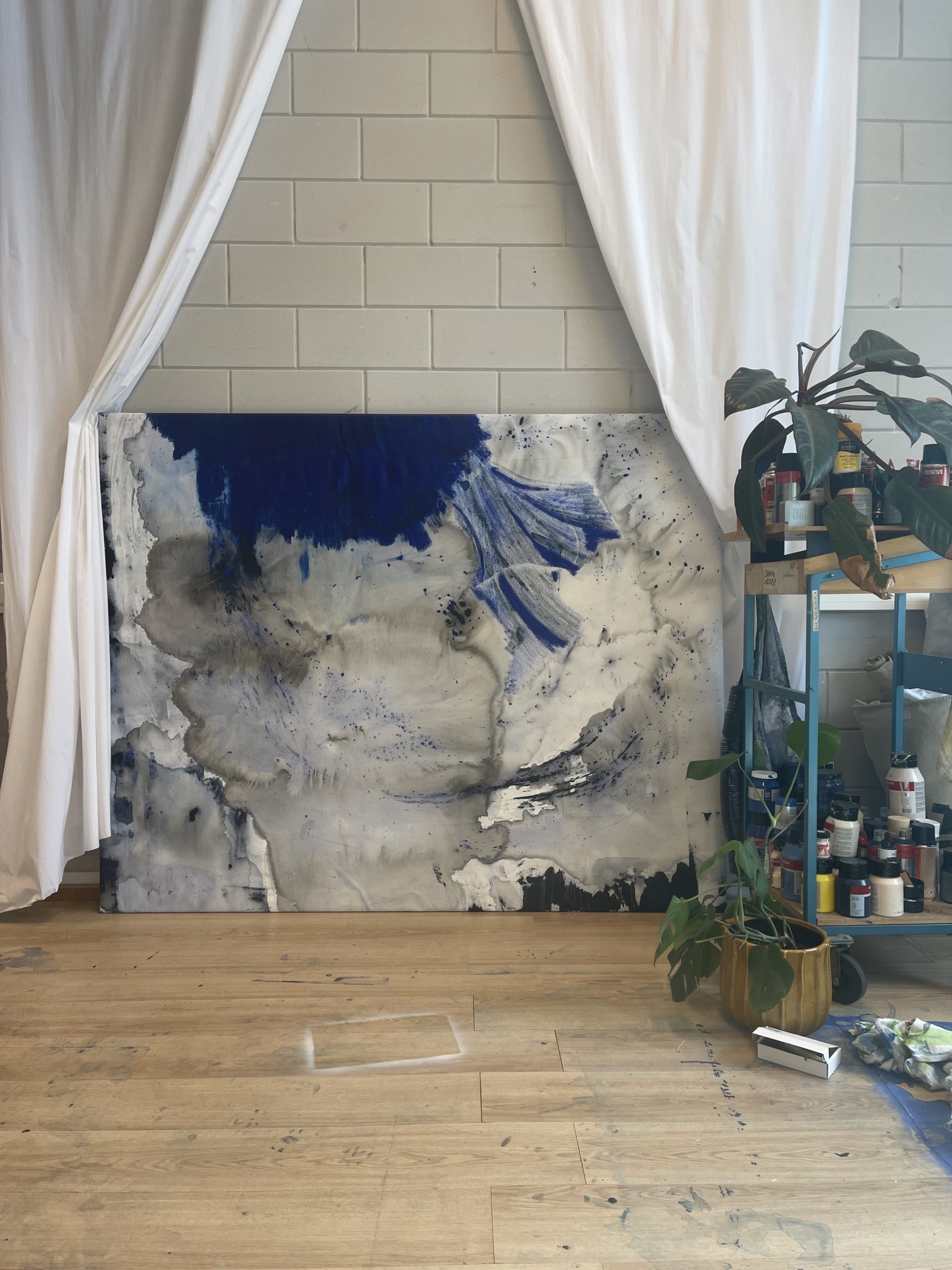

About Eline Martherus
B.(1992) Painter. Amsterdam-based contemporary artist Eline Martherus.
Eline has a natural curiosity about patterns and geometric rules. In her work she explores the boundaries of intention and the opposing forces of logic and intuition, by applying both sacred geometry and an organic, instinctual-driven, painting method.
She received a BFA (or Bachelor of Fine Arts) from the Amsterdam Fashion Institute (AMFI). After graduating she continued experimenting with the interplay of nature and its elements, such as water and sun, and developed a unique abstract style with psychological layers that are deeply personal and universal at the same time.
Please visit https://www.elinemartherus.com/ for updates and details.
